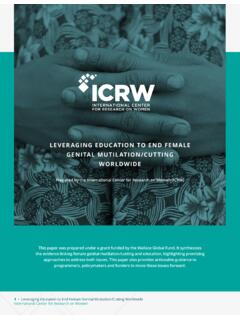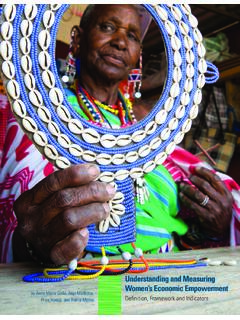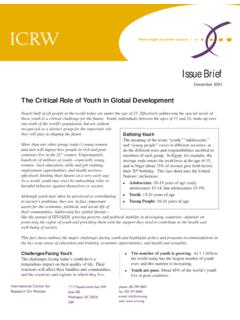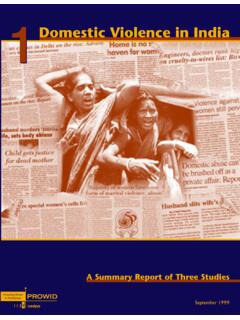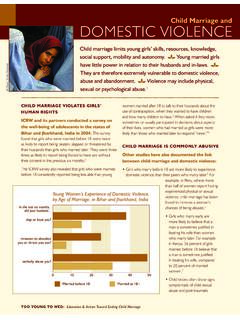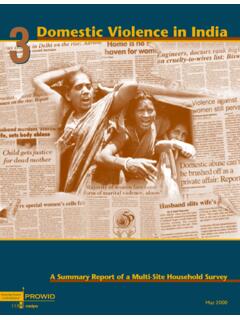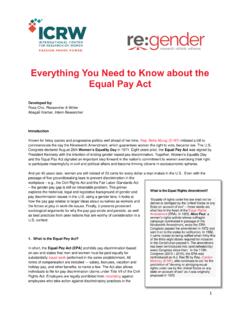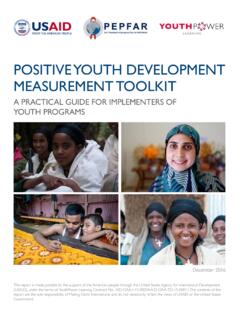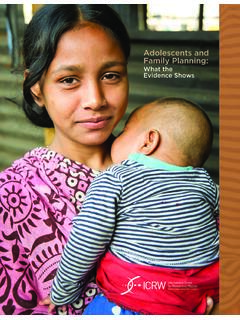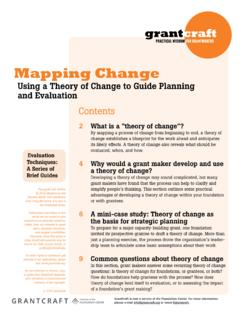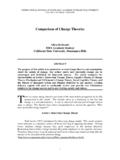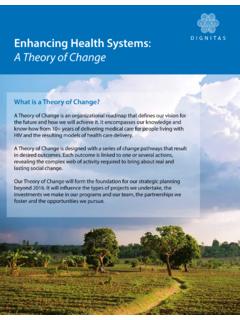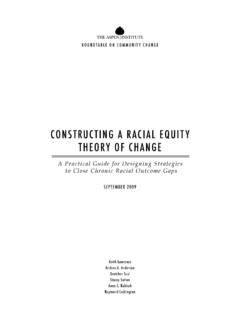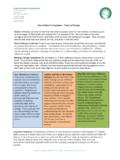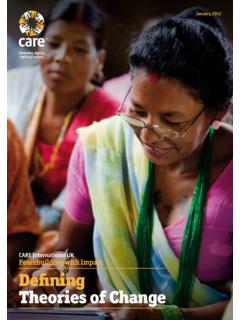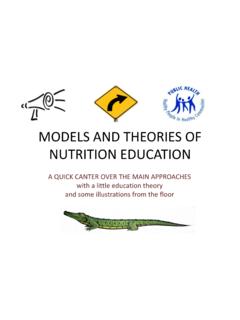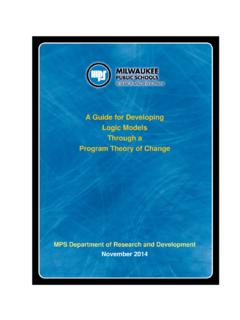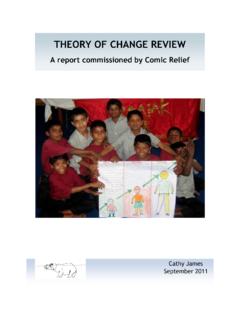Transcription of Theory of Change: Ending Child Marriage in Bangladesh
1 1 Theory of change : Ending Child Marriage in BangladeshFebruary 24-25, 2014, Dhaka2where insight and action connectIntern ational Center for Research on WomenI C RWThe workshop was funded by UNFPA through Plan Bangladesh . This workshop was designed and facilitated by Dr. Ravi K Verma and Dr. Padmavathi Srinivasan from International Center for Research on Women (ICRW), New Delhi. The document was prepared by ICRW, New of change : Ending Child Marriage in BangladeshFebruary 24-25, 2014, DhakaA.
2 Introduction to the WorkshopBangladesh has one of the highest Child Marriage rates in the world, with 64% of women ages 20-24 married before the age of 18 years, and stark rural-urban differences (71% in rural areas as opposed to 54% in urban areas) in percentage of women married before 18 years. Despite significant strides in economic growth and modernization over the past 10 years; significant increases in female literacy levels and participation in labour force; advancements in and extensive proliferation of information and communication technology; and strong political will and government commitment to change , Child marriages in the country continue unabated.
3 Analysis of data from Demographic and Health Survey (DHS) shows that the rate of Child Marriage among girls below the age of 14 years in Bangladesh has declined considerably over the last 15 years; however, the Marriage rate among girls ages 16-17 years has actually increased1, which is certainly a matter of concern requiring greater attention in a rapidly modernizing country. A two day workshop Theory of change : Ending Child Marriage in Bangladesh , conducted jointly by UNFPA and Plan Bangladesh , and developed and facilitated by the Asia Regional Office of International Centre for Research on Women (ICRW), intended to explore this paradox at length.
4 The workshop brought together different stakeholders and members of the community (Government, NGOs, INGOs, Donors, Religious leaders, and Adolescent children) under one platform to address issues related to Child Marriage . The interactions and exchanges among the groups working to prevent Child Marriage enabled every stakeholder to understand the experiences and perspectives of the other participants. Just as it is necessary for the government organizations working to end Child Marriage to understand the views, experiences, and challenges faced by the community they work in, it is equally important for the non-governmental and community based organizations to play a complimentary role and provide a platform for the implementation of community initiated and community owned programs.
5 Prevention of Child Marriage , in particular, is a case in point, where community ownership is critical, given that the practice is often justified on the grounds of deeply embedded cultural norms and beliefs relating to the institution of Marriage and value of girl Child in a society. This workshop was conducted with a view to collectively develop a comprehensive understanding of the factors that determine Child Marriage and its consequences using a socio-ecological framework, and to think of specific strategies and their interrelated outcomes at various levels in the framework that eventually impact Child Marriage .
6 The purpose of this exercise was not to find a solution to the Child Marriage problem. Rather, the intent was to bring together various stakeholders concerned with Child Marriage in Bangladesh , and to 1 Raj A., McDougal L., & Rusch M. (2013). Changes in Prevalence of Girl Child Marriage in South Asia. JAMA. 2012;307(19)2jointly conceptualize a Theory of change that should serve as a framework in developing strategies, identifying goals and activities, and possibly developing monitoring and evaluation indicators to ensure that short-term and long-term goals are being met2.
7 B. Workshop ProcessThe workshop was designed carefully to engage with diverse groups of stakeholders. There were 80 participants, comprising religious leaders and adolescent children from the community, government officials, and representatives from INGOs and NGOs. The workshop, the first of its kind in bringing together participants from diverse backgrounds with a shared goal of preventing Child Marriage in the country, produced interesting exchanges and insights. Heads of government, representatives from UNFPA and Plan International, and other participants were also present at the workshop3.
8 Critically important to the process of the workshop at various stages was the firm commitment from senior Government officials to the prevention of Child Marriage in Bangladesh . Also important to the process was the recognition that the prevention of Child Marriage has to be addressed within the cultural sensitivities of Bangladesh ; therefore, the need for intensive engagement between government and non-government and community based institutions was built into the group activities and subsequent discussions.
9 To encourage maximum participation and to draw diverse and rich ideas from the participants, and at the same time utilize the limited time to evolve a Theory of change (ToC), the workshop was divided into two segments. On the first day, participants included representatives from the community, children and religious institutions, which allowed for rich and in-depth discussions on the causes and consequences of Child Marriage and the pathways of influence. On the second day, however, the participation was confined to only policy and program officials from government and non-governmental sectors.
10 Children and religious groups were not present on the second day. The issues drew from the discussions on the first day, and the goal was to reach a clearer understanding of a jointly arrived at ToC framework. Overall, the workshop utilized the focused group approach where the larger group was divided into small groups for focused and facilitated discussions. In some sessions, the small groups were created to bring participants from similar backgrounds; in others, the participants were mixed to allow heterogeneity and diversity, and free and frank exchange of ideas across sectors.
